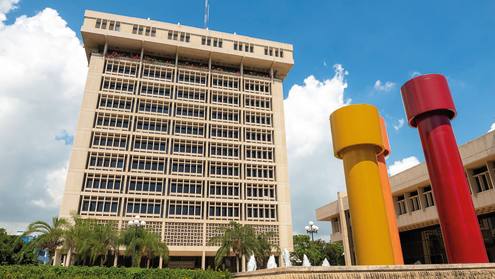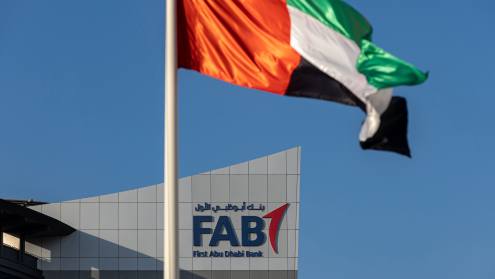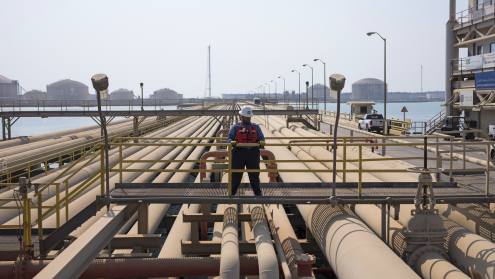The six Gulf Co-operation Council (GCC) countries are potentially a treasure trove for asset managers. All have investable wealth measured in trillions of dollars and continue to generate pools of liquidity worth hundreds of billions of dollars with each passing year.
Editor's choice
And yet the Gulf’s asset management sector remains a relatively nascent and unsophisticated industry compared with other parts of the world.
Consequently, the size of capital in the region is currently much greater than the existing asset classes. To date, the region has mainly focused on two asset classes – equity and real estate. But the picture has noticeably started to change over the past few years.
At a time when many parts of the world economy are struggling to sustain growth, the large number of planned infrastructure projects across the GCC offers an attractive investment opportunity. In turn, the region has started to grow increasingly important to international asset managers. Its attractiveness has been strengthened significantly by the establishment of the Dubai International Financial Centre (DIFC) in late 2004.
Qatar followed hot on Dubai's heels with the launch of the Qatar Financial Centre (QFC) in March 2005, aimed at spearheading Doha’s efforts to become a regional hub for financial institutions from across the world. However, so far, Dubai has grown faster than Qatar, boasting 860 institutions compared with Qatar’s 159.
Bahrain's resilience
Of course, the rise of Dubai and Qatar’s financial centres in recent years has somewhat eroded Bahrain’s standing. The kingdom lays claim to being the Gulf’s oldest financial centre after seizing the opportunity to establish itself during the outbreak of civil war in Lebanon in 1975, which saw an exodus of bankers and capital looking for a new place to set up their operations. In many eyes, its crown has slipped somewhat further over the past 18 months in light of the political turmoil that has gripped Bahrain since the first staging of pro-democracy protests in February 2011.
Yet while many financiers have speculated on the potential long-term damage this could cause to its attractiveness as a financial centre, since the start of 2012, three prominent asset management firms – Notz Stucki, Altaira and Pinebridge – have all chosen Bahrain as the site of their Middle East and north Africa (MENA) headquarters.
Today, there are 412 financial institutions registered in Bahrain, up from 403 at the end of January 2011.
“While we looked closely at the potential advantages of other Gulf financial centres, we decided to go with Bahrain for an array of reasons,” says Anthony Acampora, chief executive of Altaira. “The reputational quality of the regulator, the quality and availability of highly educated staff and of office space and services, and also our local shareholders are Saudi and we have strong links into Kuwait, so Bahrain is geographically well positioned for us.”
I think that as the region becomes more of a focus as investors look for opportunities that provide a strong return, people are going to want to be closer to the investments that they are managing
As of the first quarter of 2012, Bahrain was home to more than 2790 mutual funds, with total investments of $9.17bn, up from 2736 registered funds with an investment of $8.99bn for the equivalent period of 2011. Of these, 121 are local funds with a net asset value of $5.68bn, 55 of which are sharia-compliant funds, an area in which the authorities expect to see strong growth over the coming years. Indeed, Bahrain remains committed to carving out a role as an Islamic finance hub.
“We think that the sukuk market has strong potential,” says Kamal bin Ahmed, acting chief executive of the Bahrain Economic Development Board. “The strong international growth in the Islamic finance industry is likely to help to increase issuance and the Central Bank of Bahrain has done lots of work to help create a market in sukuk through regular short-term issuance as well as longer-term debt, such as the seven-year, $750m Islamic bond issued last year.
“Furthermore, other developments in Islamic finance – such as the work done on developing product standards around Islamic hedging by the Central Bank of Bahrain and International Islamic Financial Market – are giving investors a greater range of options in managing their investments, so this should also help to drive uptake.”
Emerging strategy
Meanwhile, the onset of the global financial crisis in 2008 has precipitated a shift in the DIFC’s strategy towards emerging markets. Since 2009, roughly 44% of new businesses joining the centre have been from the MENA region and Asia, with about 50% from Europe and North America, and 6% from the rest of the world.
In July 2012, the DIFC announced it was fine-tuning its growth strategy further through a major re-organisation at both the management and structural level. The financial centre will be segregated into two independent entities – the DIFC Authority (DIFCA) and DIFC Properties – with the latter managing its real estate portfolio. Meanwhile, Jeff Singer, the former chief executive of Nasdaq Dubai, was appointed chief executive of the DIFCA.
“Going forward, our goal is ambitious but achievable. We plan to double DIFC’s scale in terms of the number of member companies and their employees to roughly 25,000 people,” says Abdul Aziz Al Ghurair, chairman of the board of directors of DIFCA. “We also plan to develop the centre's function and reputation as host to international capital markets. To achieve this, we have decided to change the structure of the senior management team."
Regulation wrangling
In August, the United Arab Emirates also made some major changes at a regulatory level, when the Security and Commodities Authority (SCA) issued its long-awaited regulations for investment funds, which will apply to firms based in the DIFC.
The SCA stated that the regulations are aimed at boosting corporate investment, attracting foreign investment and providing more opportunities for stability in financial markets. However, they have been met with some dissenting voices, with some asset managers in the DIFC expressing concern that the regulations could hamper their business.
The SCA has classified funds created inside the free zone, and which were previously operating under offshore laws, as ‘foreign funds’. This means offerings must go through a local promoter, such as banks or investment firms, all of which need to be licensed by the central bank.
The key concern is that the new regulations could effectively stop DIFC-registered funds from marketing and selling their products outside the financial free zone in the rest of the UAE. Fund managers and other industry observers have been quick to point out that the regulations could make it more cost-effective to move to Qatar, which makes no distinction between companies operating either inside or outside the QFC.
Law firm Clifford Chance published a briefing note a few days after the publication of the SCA’s regulations that states: “Many foreign firms have chosen the DIFC as their base for accessing the Middle East market. These firms may find that the DIFC no longer provides a gateway to the UAE market the way it once did. The classification by the SCA of funds established in the DIFC as ‘foreign funds’ may detrimentally affect its growth as a funds centre and inadvertently give competitive advantage to similar free zones, such as the Qatar Financial Centre situated in Doha.”
DIFC vs QFC
While both centres try to play down their rivalry, there is no doubt that they remain in direct competition with one another. The QFC, now home to 159 institutions, has been working hard to lure foreign funds after announcing at the start of 2010 that it was changing its strategy to focus on the asset management, reinsurance and captive insurance areas.
In February 2012, the QFC appointed Bob Wigley, the former chairman of Merrill Lynch’s Europe, Middle East and Africa operations, as a non-executive director of the Qatar Financial Centre Authority, charged with promoting the fund management campaign.
In April 2012, the Qatar Asset Management Company, part of the state’s wealth fund, signed a $250m asset management deal with the UK’s Barclays, to invest in natural resource projects across the world. The deal is significant from the angle that it makes the UK bank the first to base a sizeable asset management operation at the QFC. Despite the centre’s efforts, its asset management industry has remained small, comprised of a handful of local firms and a small number of international banks that have such licences.
There are a lot of asset gatherers but most assets continue to be managed outside the region. Our aim is for Qatar to become the largest asset manager in the Middle East region
As part of the deal, Barclays Natural Resource Investments (BNRI), a division of Barclays, will locate the Middle Eastern office of BNRI within the QFC development. The investment is the first to take place under a 'seeding programme' that the QFC Authority is working on to encourage international asset management companies to base themselves in the centre by co-investing into their funds.
“We’re looking for a long-term commitment to the country,” Shashank Srivastava, acting chief executive of the QFC Authority, told The Banker in May. “Qatar is predicted to emerge as the second largest economy in the Gulf region after Saudi Arabia over the next few years. It has a 45% savings rate and the highest GDP [gross domestic product] per capita income in the world.”
Qatar's rise
Income from liquefied natural gas exports has transformed this tiny peninsula into the world’s wealthiest country. Qatar’s average GDP per capita income surpassed the $100,000 threshold in 2011 ($102,900) and is now 20% higher than Luxembourg ($84,800), according to International Monetary Fund estimates, while the unemployment rate is less than 1%.
“If you extrapolate the current growth rates, you can see that asset generation is only going to increase. There are a lot of asset gatherers but most assets continue to be managed outside the region. Our aim is for Qatar to become the largest asset manager in the Middle East region,” says Mr Srivastava.
Further to this, the country is currently managing between $200m and $300m in assets but is looking to scale this up to between $150bn and $200bn by 2020. Asset growth across the entire banking system grew 23.8% year on year as of September 2011. Qatari banks have also increasingly been moving into the asset management space in order to cater to the very large pools of liquidity being produced.
Qatar National Bank (QNB) opened its asset management division in 2005 and has subsequently grown its asset pool from QR300m ($80m) to more than QR10bn to become the largest asset manager in the country. And QInvest – Qatar’s largest investment bank – launched its wealth management business at the beginning of 2011.
While the competition intensifies between the three key Gulf centres, the region looks set to benefit from the fact that while historically wealth has been invested in Europe and the US, Middle Eastern capital is now looking for better risk-adjusted returns. “The days of fund managers jetting in with a suitcase twice a year are largely over,” says Mr bin Ahmed of the Bahrain Economic Development Board. “I think that as the region becomes more of a focus as investors look for opportunities that provide a strong return, people are going to want to be closer to the investments that they are managing.”
This shift should help stimulate continued sophistication of the product offering, coupled with an increased focus by public institutions and sovereign wealth funds on increasing their participation in regional investment funds.












